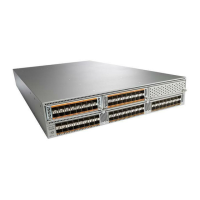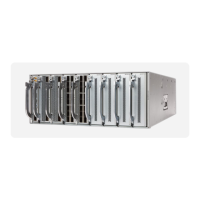Table 14: syslog Fields in syslog.conf
DescriptionField
Creator of the message, which can be auth, authpriv,
cron, daemon, kern, lpr, mail, mark, news, syslog,
user, local0 through local7, or an asterisk (*) for all.
These facility designators allow you to control the
destination of messages based on their origin.
Check your configuration before using a
local facility.
Note
Facility
Minimum severity level at which messages are
logged, which can be debug, info, notice, warning,
err, crit, alert, emerg, or an asterisk (*) for all. You
can use none to disable a facility.
Level
Destination for messages, which can be a filename,
a hostname preceded by the at sign (@), or a
comma-separated list of users or an asterisk (*) for
all logged-in users.
Action
Procedure
Step 1
Log debug messages with the local7 facility in the file /var/log/myfile.log by adding the following line to the
/etc/syslog.conf file:
debug.local7 /var/log/myfile.log
Step 2
Create the log file by entering these commands at the shell prompt:
$ touch /var/log/myfile.log
$ chmod 666 /var/log/myfile.log
Step 3
Make sure that the system message logging daemon reads the new changes by checking myfile.log after
entering this command:
$ kill -HUP ~cat /etc/syslog.pid~
Configuring syslog Server Configuration Distribution
You can distribute the syslog server configuration to other switches in the network by using the Cisco Fabric
Services (CFS) infrastructure.
After you enable syslog server configuration distribution, you can modify the syslog server configuration and
view the pending changes before committing the configuration for distribution. As long as distribution is
enabled, the switch maintains pending changes to the syslog server configuration.
Cisco Nexus 5600 Series NX-OS System Management Configuration Guide, Release 7.x
OL-31641-01 105
Configuring System Message Logging
Configuring syslog Server Configuration Distribution

